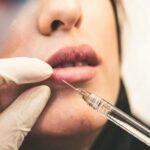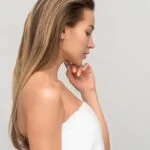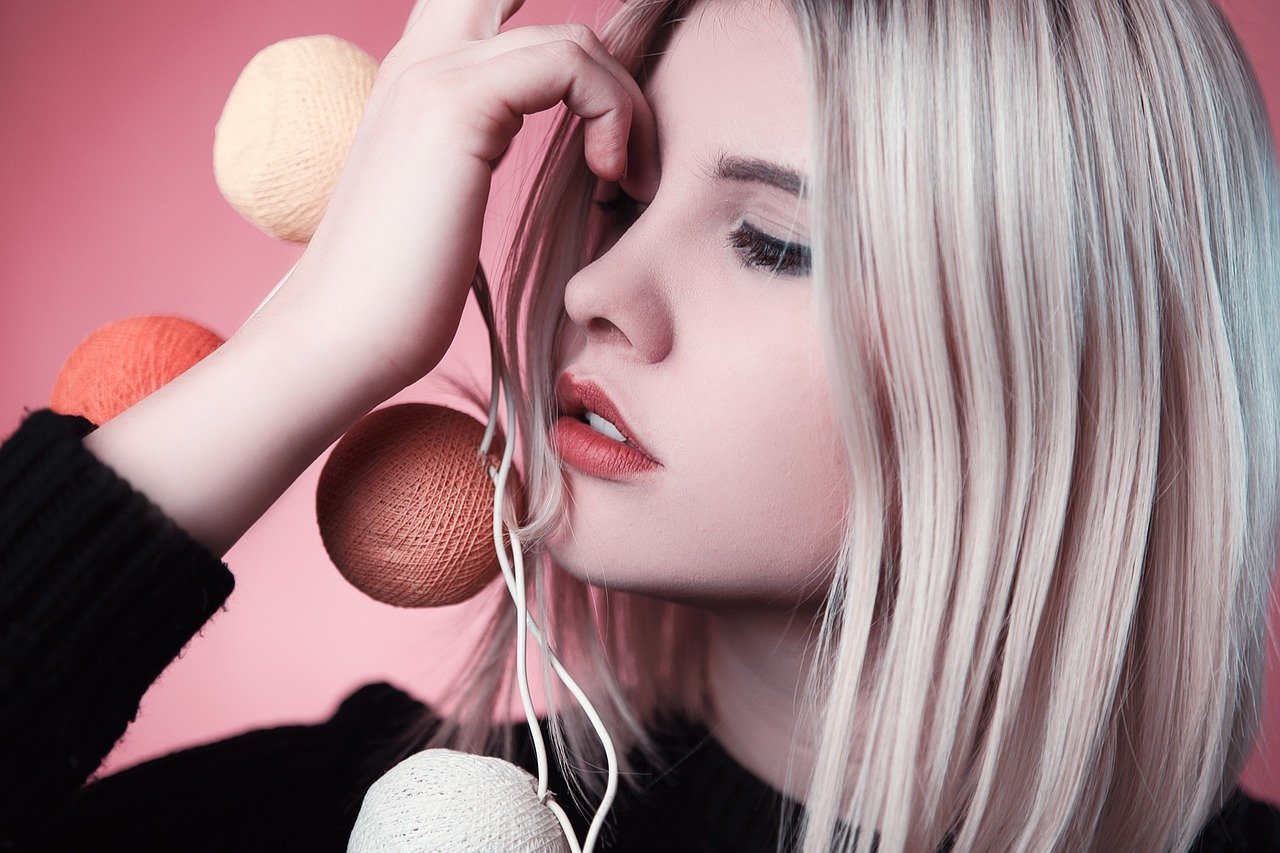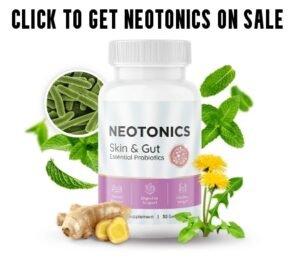Introduction: The Importance of Hair Health
Maintaining healthy and beautiful hair is more than just a matter of aesthetics; it is a crucial aspect of overall well-being and self-confidence. The condition of one’s hair can significantly influence self-esteem and contribute to a positive self-image. Healthy hair not only looks good but also reflects the body’s internal health, demonstrating the importance of proper nutrition, adequate hydration, and effective hair care practices.
The psychological impact of hair health cannot be underestimated. Hair is often considered a symbol of beauty and vitality, and its condition can affect how one perceives oneself and how others perceive them. When hair is vibrant and well-maintained, it can boost self-confidence and enhance social interactions. Conversely, hair problems such as thinning, dandruff, or damage can lead to feelings of self-consciousness and anxiety.
Socially, the appearance of one’s hair can play a pivotal role in creating impressions and can even affect personal and professional relationships. Hair that is healthy and beautiful can leave a lasting impression, contributing to a polished and well-groomed appearance. In many cultures, healthy hair is also seen as a sign of personal care and diligence, further underscoring its significance in social contexts.
This comprehensive guide aims to provide readers with valuable insights into achieving and maintaining healthy and beautiful hair. Throughout this blog, we will explore various factors that contribute to hair health, including diet, hair care routines, treatments, and the role of genetics. By understanding and implementing the strategies discussed, readers will be equipped to improve the health and appearance of their hair, leading to increased confidence and overall well-being.
Understanding Your Hair Type
In the quest for healthy and beautiful hair, understanding your hair type is a critical first step. Hair types are generally categorized into four main types: straight, wavy, curly, and coily. Each type comes with its own unique characteristics, and understanding these can help in tailoring the best care and maintenance routines.
Straight hair is the simplest type to identify. It tends to be shiny because the natural oils from the scalp can travel down the hair shaft with ease. However, it can also be prone to being oily. For those with straight hair, lightweight shampoos and conditioners that don’t weigh down the hair are ideal.
Wavy hair exhibits a texture that is not entirely straight but not fully curly either. This type of hair can easily become frizzy, especially in humid conditions. Since defining the wave pattern without making the hair greasy or heavy is essential, gel-based products can work well to enhance the natural wave formation.
Curly hair forms distinct curls and has more volume. It typically needs more moisture to keep the curls defined and bouncy. Using sulfate-free shampoos, deep conditioning treatments, and curl creams can help maintain the health and beauty of curly hair.
Coily hair, also known as kinky or afro-textured hair, forms very tight curls or zigzag patterns. It is the most fragile among the hair types and often requires intensive moisturizing routines. Products rich in natural oils, leave-in conditioners, and protective styles are beneficial to keep coily hair healthy and beautiful.
Identifying your hair type aids significantly in choosing the right hair care practices, products, and techniques. Misidentifying your hair type can lead to using inappropriate products that may cause damage instead of promoting healthy and beautiful hair. By recognizing and catering to the unique needs of your hair type, you lay the foundation for achieving optimal hair health and beauty.
Maintaining healthy and beautiful hair begins with a consistent and effective daily care routine. One of the foundational elements of this routine is the frequency of washing. While it might be tempting to wash your hair daily, experts often recommend limiting washes to two to three times per week. Over-washing can strip the hair of its natural oils, leading to dryness and potential damage. Instead, find a balance that suits your hair type and lifestyle.
Choosing the right shampoo and conditioner is equally important. Opt for products that cater to your specific hair type, whether it’s oily, dry, curly, or color-treated. Look for shampoos and conditioners that are sulfate-free and enriched with natural ingredients to nourish your hair and scalp. Ingredients like argan oil, keratin, and biotin can significantly contribute to maintaining healthy and radiant hair.
Proper washing techniques play a crucial role in hair care. When shampooing, focus on massaging the scalp gently with your fingertips to stimulate circulation, which can promote hair growth. Avoid using nails or excessive force, as this can lead to scalp irritation. After applying conditioner, allow it to sit for a few minutes to penetrate the hair shaft before rinsing thoroughly.
The drying process is another significant factor in daily hair care. Air-drying is generally the healthiest option for preserving hair’s natural moisture and minimizing damage. If air-drying isn’t feasible, use a blow-dryer on a low or cool setting to reduce heat exposure. Holding the dryer at a distance and using a heat protectant spray can further safeguard against damage.
Incorporating these daily practices into your routine lays the groundwork for attaining and sustaining beautiful hair. The right frequency of washes, product choices, washing techniques, and drying methods can make a substantive difference in the overall health and appearance of your hair. Prioritize consistency and attentiveness to detail in your daily regimen to enjoy the cumulative benefits over time.
Nourishing Your Hair from Within
The journey to achieving healthy and beautiful hair begins from within. The foundation of vibrant and resilient hair is closely tied to diet and hydration. A balanced intake of essential vitamins and minerals is crucial for promoting hair growth and maintaining overall scalp health. Your diet should include a variety of nutrients that support the complex biological processes involved in hair development.
Key vitamins and minerals for robust hair health include:
Vitamin A: Encourages the production of sebum, which keeps the scalp moisturized and the hair looking shiny.
Biotin (Vitamin B7): Vital for hair growth and strength, as it assists in the production of keratin, the protein that makes up hair.
Vitamin C: Plays a significant role in collagen production, which helps maintain strong hair follicles. It also aids in the absorption of iron.
Vitamin D: Addresses hair shedding issues and supports the creation of new hair follicles.
Iron: Essential for carrying oxygen to the hair’s roots, iron deficiency can lead to hair thinning and loss.
Zinc: Facilitates tissue growth and repair, including that of hair and scalp.
A balanced diet full of these nutrients should feature specific foods known to bolster hair health. For example, carrots and sweet potatoes are rich in Vitamin A, while eggs and nuts provide ample biotin. Citrus fruits and bell peppers are excellent sources of Vitamin C, and fatty fish like salmon offer a good supply of Vitamin D. Lean meats and spinach are high in iron, and oysters and pumpkin seeds are packed with zinc.
Moreover, adequate hydration is indispensable for maintaining the elasticity and moisture of your hair. Drinking at least eight glasses of water a day ensures that your hair remains hydrated, reducing the risk of breakage and split ends. Supplementing your hair care with certain supplemental products can help too.
By nourishing your body with the right nutrients and maintaining proper hydration, you lay the groundwork for hair that is not only healthy but also exceptionally beautiful.
Essential Hair Treatments and Masks
Similar to improving skin tone, achieving healthy and beautiful hair requires more than just regular washing and conditioning; it often necessitates the inclusion of specialized hair treatments and masks. These supplementary treatments play a pivotal role in replenishing moisture, restoring shine, and fortifying hair against damage.
Treatments and masks can generally be categorized into homemade remedies and store-bought products, each exhibiting distinct benefits and applications. Homemade hair masks, such as those incorporating natural ingredients like avocado, honey, and coconut oil, are excellent for nourishing and hydrating hair. These ingredients are rich in essential vitamins and fatty acids that promote hair health. A simple avocado and honey mask, for instance, can be created by mashing ripe avocado and blending it with a tablespoon of honey. Apply the mixture to damp hair, covering it with a shower cap, and rinse thoroughly after 30 minutes to reveal softer, shinier hair.
On the other hand, store-bought masks offer advanced formulations designed by professionals. These products often contain a potent blend of nutrients, including proteins, keratin, and vitamins, targeting specific hair issues such as dryness, frizz, or breakage. Keratin masks, for instance, are particularly effective for revitalizing damaged or chemically-treated hair, helping to rebuild the hair structure and enhance resilience.
Correct application of these treatments is crucial for optimal results. It is generally recommended to apply hair masks to clean, towel-dried hair, focusing on the mid-lengths and ends. Massage gently to ensure even distribution before covering with a shower cap. The use frequency of these treatments varies based on hair type: oily hair benefits from a treatment once every two weeks, whereas dry or damaged hair may require weekly application. Balancing these treatments with regular hair care routines is essential to achieving and maintaining healthy, beautiful hair.

Protecting Your Hair from Damage
Maintaining healthy and beautiful hair requires a proactive approach to protect it from various sources of damage. One prominent factor is the heat applied during styling. Utilizing tools such as flat irons, curling wands, and blow dryers can significantly weaken the hair structure, leading to brittleness and split ends. To mitigate this, it is essential to incorporate heat protectants into your hair care regimen. These products create a barrier that minimizes the direct exposure of hair to extreme temperatures, thereby preserving its natural integrity.
Avoiding harsh chemical treatments is another crucial step in safeguarding hair health. Procedures like permanent coloring, perming, and relaxing can strip the hair of its natural oils and disrupt the cuticle layer, resulting in dry, frizzy hair. Opting for gentle, sulfate-free shampoos and conditioners, along with deep hydration treatments, can help maintain the hair’s moisture balance and overall vitality. Moreover, spacing out chemical treatments and allowing sufficient recovery time between them can reduce long-term damage.
Environmental factors such as sun exposure, pollution, and humidity also play a role in deteriorating hair health. UV rays from the sun can break down hair proteins and cause discoloration, while pollutants can settle on the scalp and clog hair follicles. To counteract these effects, wearing hats or using hair products with UV filters can act as a protective shield against sun damage. Likewise, regular cleansing can remove harmful pollutants and prevent build-up that can impair hair growth.
Incorporating these protective measures diligently can lead to healthier and more beautiful hair. Small adjustments in daily routines, awareness of harmful elements, and choosing the right products can significantly attenuate damage and maintain hair in its natural, vibrant state.
Regular Trims and Hair Maintenance
Regular trims play a crucial role in maintaining healthy and beautiful hair. Haircuts are not merely a matter of style; they significantly contribute to the overall health of your hair. Trimming helps prevent split ends, which can travel up the hair shaft and cause extensive damage. By removing these damaged ends, you preserve the integrity of the hair, making it look thicker, shinier, and healthier.
The frequency of trims largely depends on your hair type and its condition. For individuals with healthy hair and a slower growth rate, a trim every 8-12 weeks may suffice. However, those with faster hair growth or who suffer from damage such as split ends or chemical over-processing might benefit from more frequent cuts, approximately every 6-8 weeks. Fine or thin hair types might require trims every 6-8 weeks to appear fuller, while curly and textured hair, which can endure longer between trims, typically needs a trim every 10-12 weeks to prevent frizz and maintain curl definition.
Finding a competent hairstylist is equally vital for maintaining your hair’s health and beauty. Seek recommendations from friends or family members who have hair types similar to yours. Reviews and online portfolios can also give insights into a stylist’s expertise and style. Communication with your stylist is key; clearly express your hair goals and ask for advice on how to achieve and maintain them. A good hairstylist will tailor their approach to your hair type and condition, ensuring the best possible care.
Regular trims, paired with professional advice tailored to your hair type, are fundamental steps in your journey towards achieving and maintaining healthy and beautiful hair. By committing to a consistent trimming schedule and partnering with a skilled hairstylist, you ensure that your hair remains in optimal condition, reflecting vitality and natural beauty.
Conclusion: Consistency is Key
Achieving and maintaining healthy and beautiful hair is a goal that requires consistent effort and dedication. Throughout this comprehensive guide, we have explored various aspects of hair care, focusing on practices that ensure your hair remains vibrant and robust. Central to these practices is the importance of a regular and well-rounded hair care routine. From understanding your hair type to selecting the right products, each step plays a critical role in promoting your hair’s health and aesthetic appeal.
First and foremost, knowing your hair type allows you to tailor your hair care regimen to meet its specific needs. This foundation helps in choosing appropriate shampoos, conditioners, and treatments that nourish your hair effectively. Regular washing with suitable products ensures that your scalp is clean and your hair is free from excess oils and build-up, which can impede growth and cause damage.
In addition to cleansing, the use of conditioners and hair masks introduces necessary moisture and nutrients, supporting your hair’s resilience and shine. These products help combat the adverse effects of styling tools and environmental factors, which can lead to dryness and breakage. Regular trims are also essential, as they eliminate split ends and encourage healthy hair growth.
Nutritional intake is another cornerstone in achieving beautiful and healthy hair. A balanced diet rich in vitamins, minerals, and proteins provides the building blocks necessary for strong hair strands. Including foods like leafy greens, nuts, and lean proteins in your diet can significantly impact the overall health of your hair.
Lastly, embracing protective hairstyles and reducing the use of harsh chemical treatments and heat styling tools can prevent hair damage. Incorporating these protective measures into your routine preserves your hair’s natural strength and luster.
By consistently applying these tips and integrating them into your daily life, you are well on your way to achieving the healthy and beautiful hair you desire. The journey to exceptional hair is paved with diligence, the right choices, and ongoing care. Stay committed, and your efforts will undoubtedly be rewarded with hair that exudes health and beauty.









